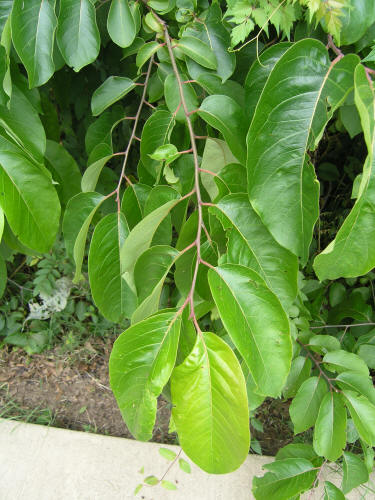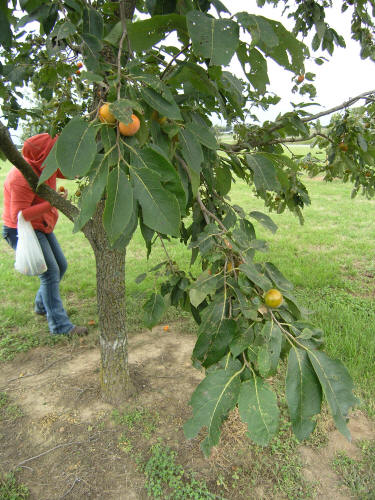
Persimmon
Diospyros virginiana
Ebenaceae (Ebony Family)

▲▼leaves and buds


▲▼ fruit

Location on campus: at east end of retention basin at southwest corner of National and Grand streets, near the large American Hollies
Diospyros virginica:
Persimmon
·
leaves are alternate, oval, 3-6 inches long and ½ as wide with smooth or
sometimes slightly serrate margins and pointed tip; leaves are dark green on
upper surface, lighter green below
·
stems are slender, gray-brown to red-brown, hairless or slightly pubescent
·
grows 35 to 60 feet tall and about ½ as wide
·
trees are dioecious and flowers not showy
· fruit (only on female trees) is a 1-1.5 inch diameter, pink-orange, glaucous globe-shaped berry with orange, fruity, edible pulp; fruit often not edible until exposed to hard freeze; seeds have been said to
predict winter conditions by the embryo shape/pattern inside the
seed
o
some wild and selected varieties do produce fruit that is edible before
freezing, but most wild ones are not edible until after a freeze
·
bark is nearly black, broken into rectangular-blocky ridges; wood is very hard
·
grows in full sun to full shade sites (heavier fruit in brighter locations)
·
prefers moist, well-drained, fertile soils, but will grow in drier,
low-fertility soils, too;
·
native to Missouri